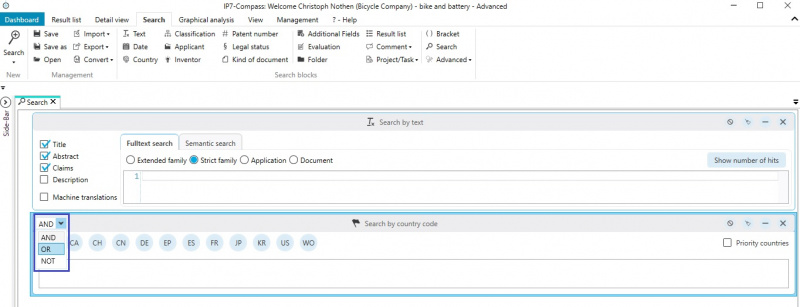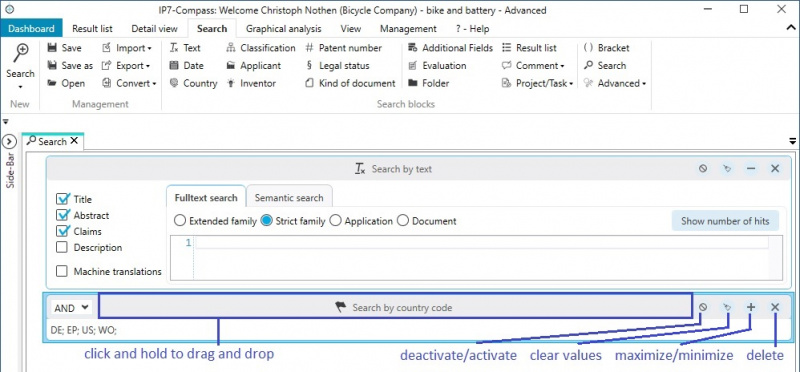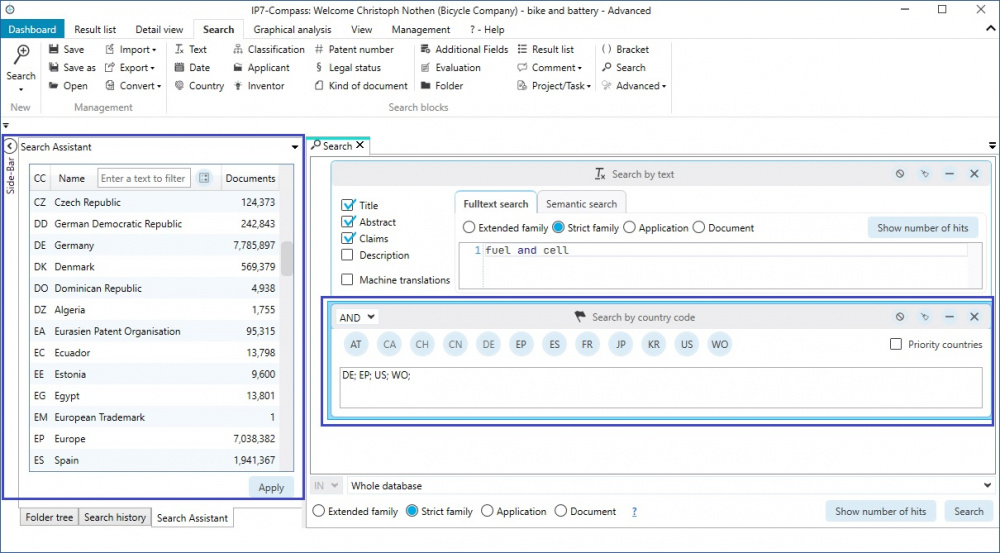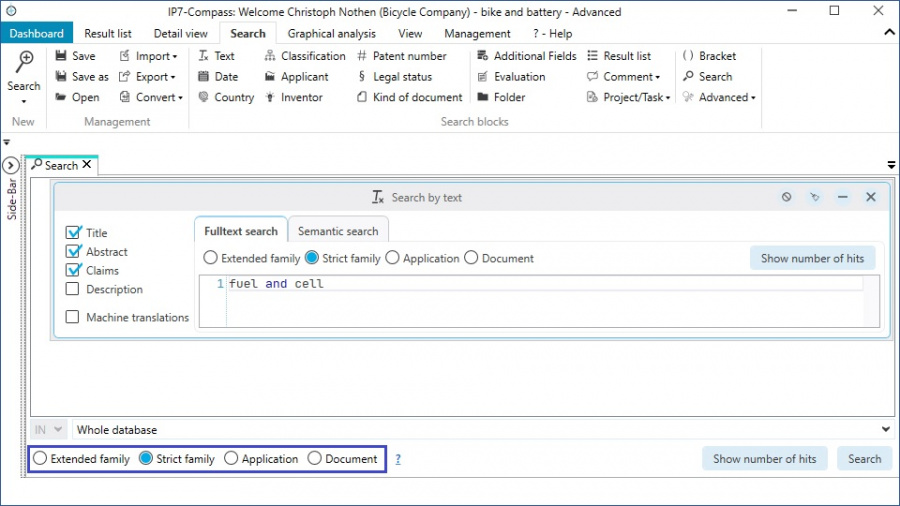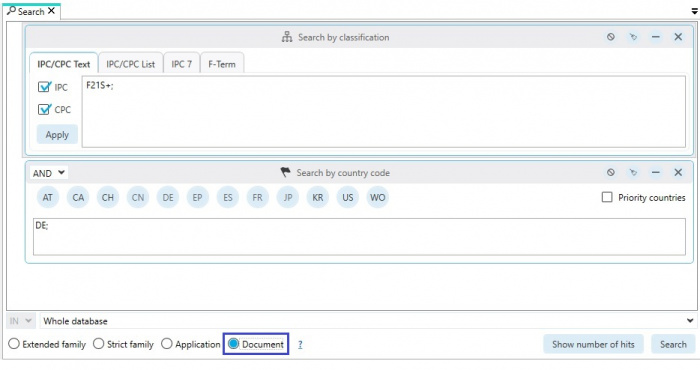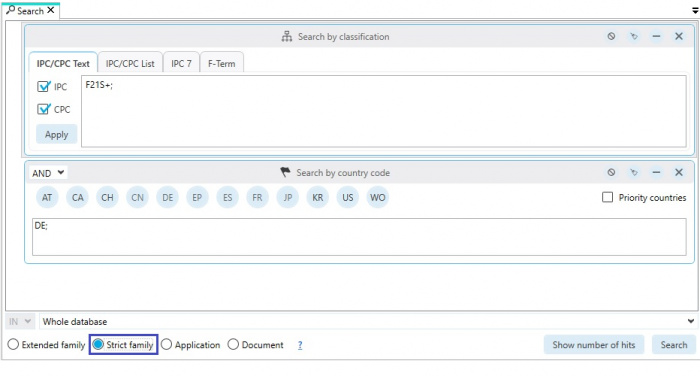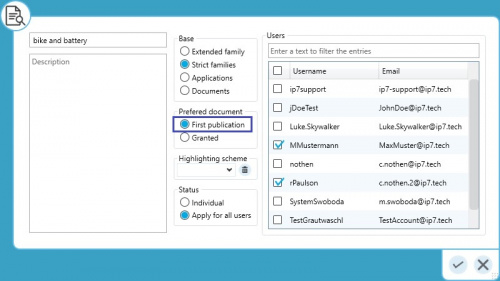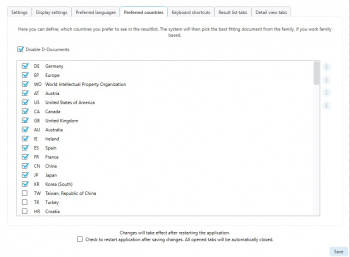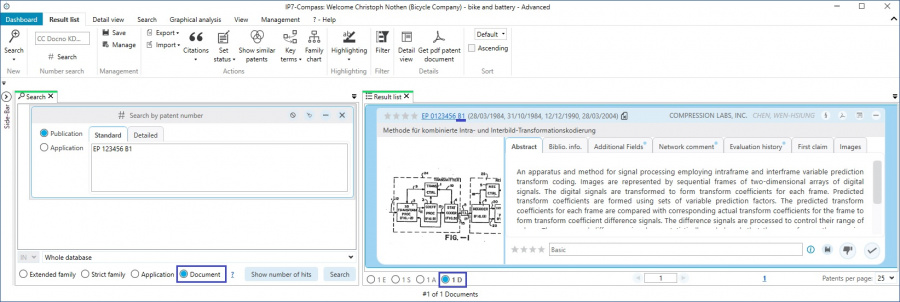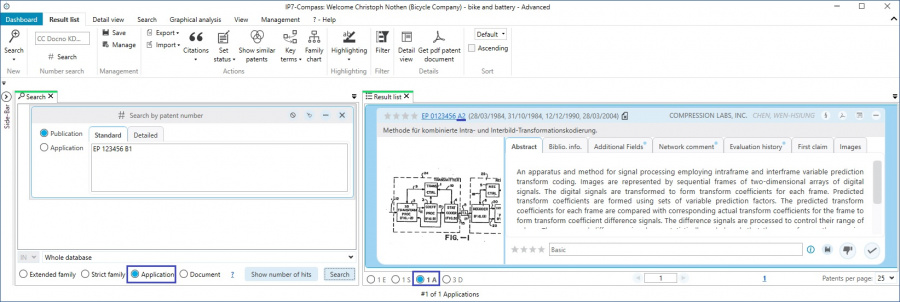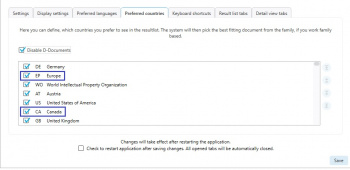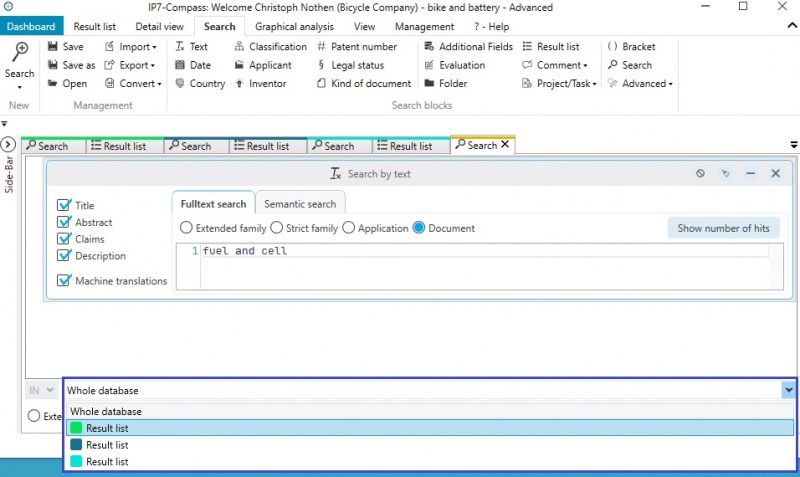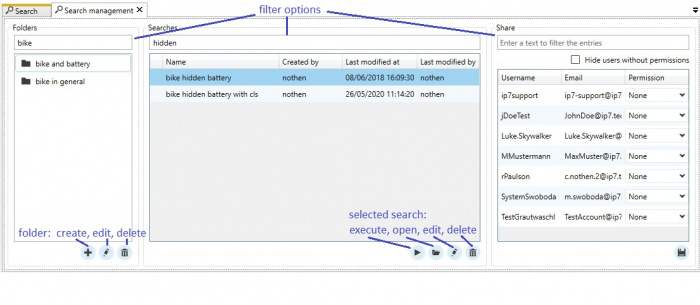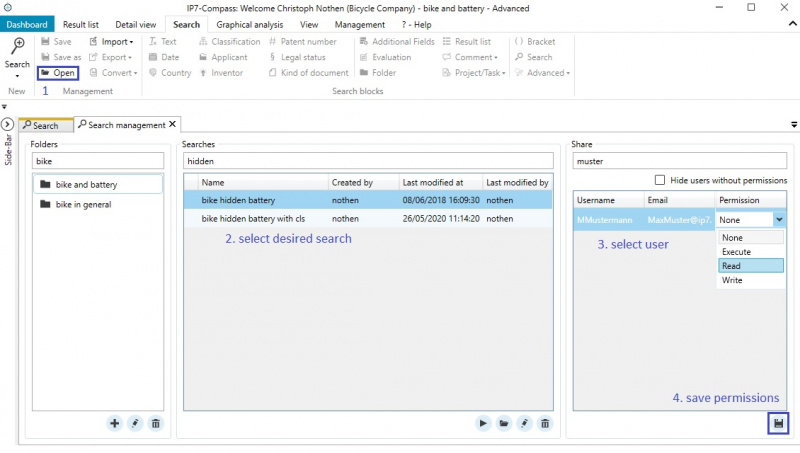EN:Patent Search
With the IP7 search, extensive search options are available.
General
The menu item "Search" is used to create and administrate searches.
The button "New" is used to create a new, empty search.
The search can then be filled with the desired search blocks.
Altogether, 20 search blocks are available:
- Text
- Date
- Country
- Applicant
- Owner
- Inventor
- Kind of Document
- Classification
- Bracket
- Patent Number
- Result List
- Additional Fields
- Evaluation
- Project Comment
- Network Comment
- Group Comment
- Folder
- Search (nested searches)
- Legal Status
- Monitoring Task
Search Blocks
By clicking on a search block, e.g. “Text”, the search block is added to the search.
Multiple search blocks in a search can be linked with AND, OR, NOT.
Search blocks can be moved, minimized, emptied and deleted.
A “Search Assistant” is available on the left hand side for the currently selected search block.
Depending on the selected search block, the “Search Assistant” is available with the corresponding options:
Search for country codes → Country code list
Search for classification → Classification tree
etc.
Basis of the search
For any search, the desired basis can be selected.
Document – all found documents are displayed
Application, Strict family or Extended family – the result is grouped to the selected unit
Example: If a search finds 3 documents, belonging to 2 applications, belonging to 1 “strict” family
if “document” is selected, all 3 found documents are displayed
if “application” is selected, the 2 applications are displayed
if “Strict family” is selected, 1 strict family is displayed
multiple search blocks
Depending on the selected basis, the search is performed using the corresponding unit.
If, for example, “Document” is selected all of the search criteria (search blocks) must be fulfilled within the document.
All DE documents with the respective class are found.
If “Strict family” is selected, all of the search criteria must be fulfilled within the strict family.
All strict families containing a DE document and the searched class will be found.
It may occur that a different document from the same family (e.g. the US document) contains the class instead of the DE document.
Representative
If, for example, “application” is selected, and multiple documents of an application are found via a search, the Project settings can be used to determine which of the documents is displayed.
If, for example, “Strict family” is selected and multiple applications of a family are found via a search, a representative can be selected in the settings.
Example
On the left side, the search is displayed and on the right side the corresponding result.
The search target is EP 123456.
Option: „Document“
The result is automatically grouped to the previously selected setting.
The search was aimed to find exactly 1 document (B-document) and only this document is displayed in the result list. („1 D“ - 1 document).
Option: "Application"
This way all documents of an application are found.
(see result list "3 D" - 3 documents)
However, only one document per applications is displayed, as “A” (application) is automatically selected within the result list.
The A2-document is displayed, as this was previously selected in the project settings.
If, for example, the settings would be changed to “Granted", the B-document would be displayed.
Option: Families (in this example „Strict family“)
The setting "Strict family" finds all applications of a strict family.
Now, depending on the setting “Preferred countries” the respective application is displayed.
Search in result
With the option "Search within" it is possible to search within selected results.
This way it is possible to narrow large results step by step.
Open/save searches
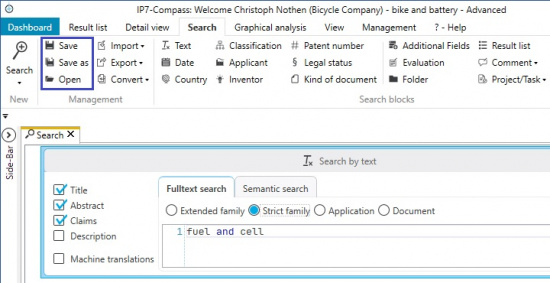
Previously created searches (search criteria) can be saved and subsequently opened again.
The search can then be performed again or edited. Additionally saved searches can be set up as automatic searches.
When managing the searches you are able to classify or sort the searches via folders.
Folder names and the search titles can also be filtered.
Saved searches can be shared with other users:
1 Open search
2 Select desired search
4 Select desired user
5 Select permission in the DropDown field and finalize using with Save button


